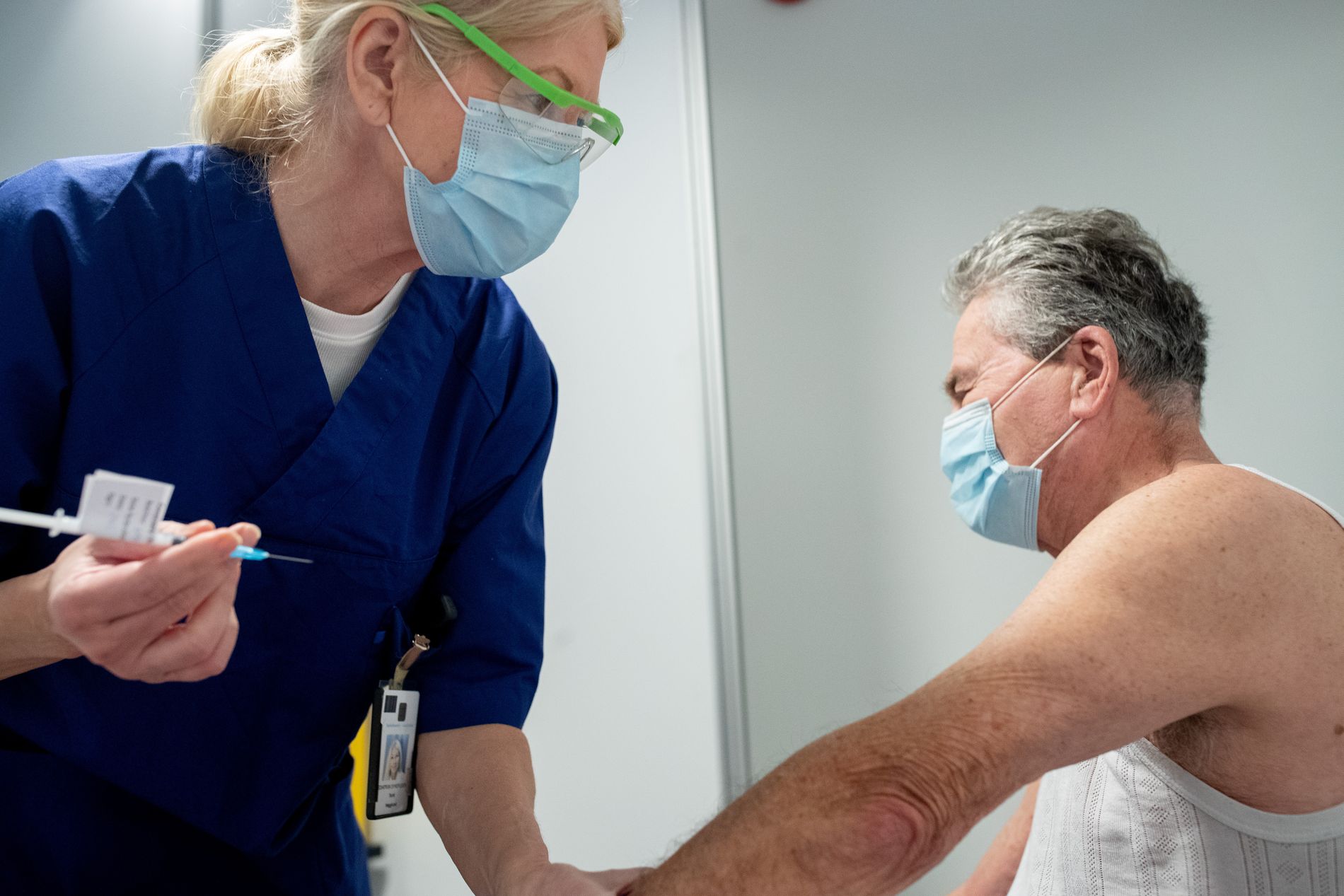Erick Erling Berghoff (83) received his second vaccine dose at Lovisenberg Diakonale Hospital in February. Photo: Fredrik Solstad, VG
––
The NIPH figures are clear: It pays to have a new vaccination strategy where both younger and older people are vaccinated at the same time.
–
In Denmark, they have chosen a kind of mixing strategy to vaccinate everyone under the age of 50.
The idea is to beat two birds with one stone: to vaccinate both middle-aged people who are slightly prone to disease and younger people who spread infection, at the same time.
It seems to be happening in Norway as well:
– We come to the same thing in our analyzes. That it pays to mix, says infection control director Geir Bukholm to VG.
If the government is in favor of this, it will only happen after those over 45 have been vaccinated, which now seems to be in mid-June.
MANAGER: FHI’s analyzes show that it pays to shuffle the age order after those over 45 have been vaccinated. Photo: Tore Kristiansen
––
This is the order in Denmark
In Denmark, the strategy is for two different age groups to be vaccinated at the same time:
- 16–19 years & 45–49 years (month change May / June)
- 20–24 years & 40–44 years
- 25–29 years & 35–39 years
- 30–34 years
– What have you in FHI specifically looked at?
– Which combinations give the best results to protect against serious illness. We find that mixing gives better results, but the differences are not large.
The alternatives they have looked at for the group 18-44 are older to younger, younger to older and mixed.
– How will the order be in Norway? Who has to wait a little longer and a little shorter?
– We will deliver a recommendation on a revised vaccination strategy soon. The recommendations for order and mixing of age groups will be available after we have submitted the recommendations.
If Norway follows Denmark’s order, it will mean that 18-year-olds and 45-year-olds will both receive the vaccine then, while those between 30–34 will have to wait until the end of July.
In Norway, 30–34-year-olds are the largest population group with 380,000 people, according to Statistics Norway.
– And you have entered updated figures on the infection prevention effect of 90 percent in your calculations?
– Yes, we have added that mRNA vaccines have a 90 percent effect against the spread of viruses.
SEQUENCE: This is how Denmark has chosen to set up the vaccine course. Photo: National Board of Health
––
– Do we not have so many vaccines in June that we do not have to think about such things?
– It is a point that we get a lot of vaccine doses now. We will soon have more than enough vaccine doses, and this measure will have a short duration of action, from mid-June to the end of July. More than 4 million vaccine doses will be given during the summer, so the most important thing now is that these vaccine doses are set as soon as possible, says the director of infection control.
In the justification to the Danish Ministry of Health, they write the following:
«When all persons aged 50 and over have been vaccinated, the National Board of Health finds that it is most appropriate for health professionals to prioritize both the oldest and youngest in the group aged 16–49. This takes into account both the, albeit small, age-related risk of disease, at the same time as an, albeit larger, spread of infection in younger groups. “
Those who receive the vaccine in the end are citizens between the ages of 30 and 34.
Vaccines stop infection
On Monday, the National Institute of Public Health will deliver a new vaccine strategy to the government. It pays more attention to how the vaccine can be used to prevent it from spreading in society.
Figures from Israel shows that the Pfizer vaccine largely prevents further infection. An American study estimates that both Pfizer and Moderna are 90 percent effective against coronary heart disease – and thus prevent the vaccinated from infecting others.
It is a strengthening argument for prioritizing the young people who are the most active in society before the elderly.
At the same time, vaccine deliveries to the country will increase in the coming weeks. It is therefore unclear how much effect such a change will have, when there will still be enough vaccines for everyone over 18 in the summer months:
–


